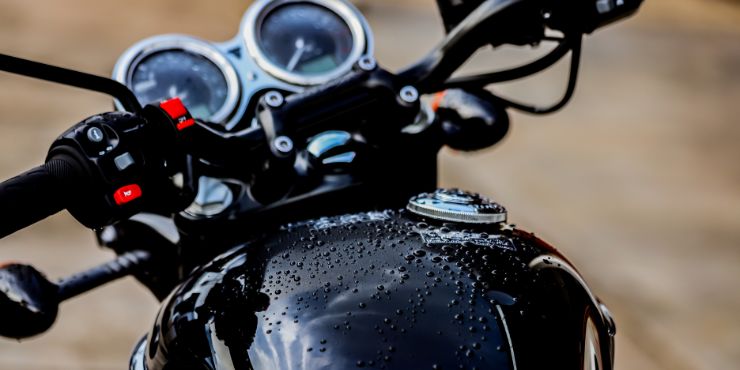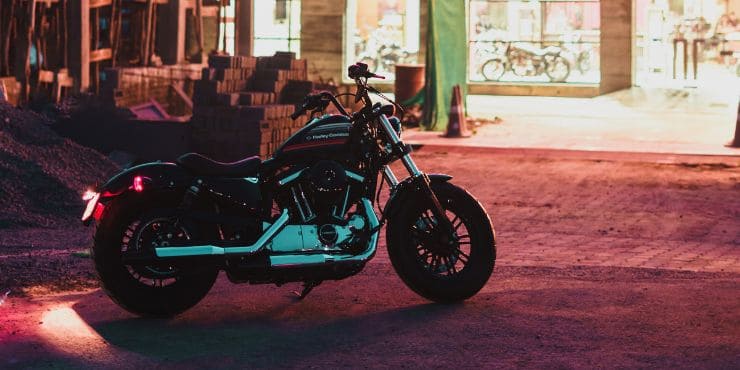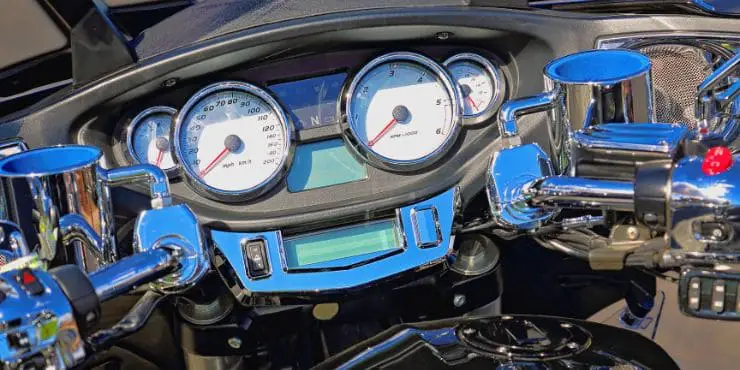Do you own a Harley-Davidson bike, and you get a Lo RNG message, but you don’t know what it means? If so, then you’re definitely in the right place
“LO RNG” on a Harley-Davidson indicates that the motorcycle is low on fuel, signaling that it’s nearing the end of the current fuel range.
In this article, you’ll get to know all about Lo RNG, what does Lo RNG mean on a Harley-Davidson bike, how to fill up your Harley-Davidson bike’s gas tank, and more. Continue reading to get all the answers that you’re looking for.
What does Lo RNG mean on a Harley-Davidson bike?
Lo RNG is used as a warning to indicate that the motorcycle is shortly going to run out of fuel. Once the low fuel warning indicator turns on, the fuel level is slow. The low fuel warning light has one function, and it’s to warn the drivers of the low fuel level. Once the light comes on, there is still some fuel left in the tank, but not much. You need to try and find a gas station as soon as possible if the light illuminates while you’re driving.
While it mostly means that you’re low on gas, but it can also be the indicator of a weak battery or loose ground. If you know that the tank has gas, and it doesn’t reset after you’ve driven a mile, you should check the battery and ground connections.

How does the Lo RNG functionality work?
The Lo RNG functionality is used for denoting that there’s low fuel in your Harley-Davidson bike. The fuel range function will show you the approximate mileage available with the amount of fuel that is still left in the fuel tank.
With the ignition switch in the ACC or Ignition position, you should press the function switch until the fuel range function gets displaced. It’ll be indicated by the letter “r” on the left-hand side of the odometer display.
The calculated remaining distances (kilometers or miles) to empty will be displayed. The number will be based on the amount of fuel left in the tank. The range can be easily accessed at any time using the function switch.
Once the low fuel warning lamp illuminates, the range feature automatically gets displayed in the odometer, unless the automatic pop-up feature gets displayed by pressing and holding the function switch when in range display mode. The automatic range pop-up feature shows that it’s displayed by blinking twice.
Likewise, you can reactivate the automatic range pop by a press and hold of the function switch. The range blinks once when the automatic pop-up feature gets re-enabled.
Once the low fuel warning lamp turns on, there are around 1.00 gallon or 3.79 liters of fuel still remaining in the tank. You’ll need to refuel as soon as you can. The range display will only get updated once the vehicle starts moving.
After the range calculation has reached 10 miles or 16 kilometers remaining, the range display will show “Lo RNG” to indicate that the vehicle will run out of fuel soon. Resetting the low fuel warning lamp and range will require an ignition cycle change.
How to refuel your Harley-Davidson bike?
Filling up the gas tank on your Harley-Davidson is a key step to keeping your bike running smoothly. If you’re new to Harley-Davidson bikes, filling up the tank might seem slightly confusing at first. During such times, you’d want to know how to fill a Harley-Davidson gas tank properly.
Gas tanks on a Harley-Davidson bike can be quite tricky to fill. You should position the gas nozzle just right, often without being able to see where it is pointing. The gas nozzle can get exposed to the elements, which can make it difficult to get the gas flowing. Sometimes, the gas nozzle could be so far away from the filler neck that can be difficult to get the hose in the right position.
Filling a Harley-Davidson gas tank is a fairly quick and easy process that will only take a few minutes. The first thing that you’ll need to do is find a gas station. It can be done by looking for the nearest gas station using GPS or asking someone’s help for directions. Once you have found the gas station, you should follow these steps.
Step 1: Get off your Harley-Davidson bike and keep it on the kickstand
You’ll have to get off your bike to fill the gas tank first. You’d be surprised to find out how many people try filling the gas tank while sitting on the bike. This is far from the correct position. If there’s an accident, you won’t be able to react quickly enough or move to a safe place while you’re sitting on your bike.
Leave the bike on the kickstand and begin filling the tank. This is the case because most motorcycle manufacturers recommend that you should keep the gas tank full on the kickstand. They help the fuel tanks stay in the optimal position.

Step 2: Take off the helmet
Filling the gas tank of a bike is a quick and easy task. Sometimes, it can feel slightly embarrassing or cumbersome to take off your helmet. In fact, your helmet will make it difficult to hear the subtle sounds.
You’ll have to hear the gurgling of the fuel in the tank, which can get blocked by the helmet. It indicates exactly how much the fuel tank has been filled and how fast the tank is being filled. You should not neglect to take off your helmet when filling the gas tank.
Step 3: Completely insert the filler nozzle into the tank
You must insert the filler nozzle completely. There’s a tendency among many bikers to insert a little portion of the filler tip into the tank. This will give you the possibility of many minor accidents.
A fully inserted filler nozzle might not leak, or there’s a possibility of this type of accident. Additionally, it’ll take up space in the tank. That’s why if you accidentally drop a huge amount of fuel when taking it out, the fuel level will remain at a relatively safe level.
Step 4: Never overfill the tank
You should stop pumping if the fuel level has reached near the top of the tank. Many bikers fill in the gas tank in a way that the fuel comes out, even with an insignificant movement. The best advice would be to never try doing this. Overfilling can cause many issues with your bike.
You might have noticed that the gas tanks of your bike have fine holes for the passage of air. This happens because when you’re riding a bike, the fuel could get a bit hot due to the heat. As a result, the volume of fuel will also increase a bit. At this stage, air from the surface of the tank exits through the tiny holes and keeps the tank pressure-free.
Due to overfill, there’s no air in the tank and at this stage, fuel will come out through the hole. It can cause many issues and worsen the color of your bike’s tank.
Step 5: Remove the filler nozzle
Even if you’ve got a tight schedule, you’ll have to be a bit more careful and take time when you’re removing the filler nozzle. Instead of taking the nozzle out at once, take out some portion while holding it by pressing the trigger until the fuel stops flowing.
Some of the fuel could leak from the tip of the filler nozzle due to faster expulsion. The engines of most air-cooled bikes become pretty hot after running for a while. You’ll be surprised to know that coming in contact with these fuels could cause accidents like fire.
Step 6: Apply the gas cap
When you’ve finished refueling your bike, put on the gas cap properly. Often, bikers don’t do it properly as they’re rushing. As a result, the gas cap could suddenly open and cause trouble. Of course, certain models of gas caps are responsible for this as well.
Although not many gas caps, some of them might be tricky to use. Many times, they don’t close well if you don’t do it with care. You should be careful when you’re installing these kinds of gas caps for avoiding any unpleasant situations and help the bike function smoothly for longer.
Conclusion
Thank you for reading. Hopefully, now you know a lot more about Lo RNG, what does Lo RNG mean on a Harley-Davidson bike, how to fill up your Harley-Davidson bike’s gas tank, and more. Lo RNG means on a Harley-Davidson bike that your bike will shortly run out of fuel, and you’ll need to refuel it.
Aside from being low on gas, it could also mean that your bike has a weak battery or loose ground. Once you get the Lo RNG indication, you’ll need to resolve the issue quickly. Otherwise, it could affect the bike’s performance.

